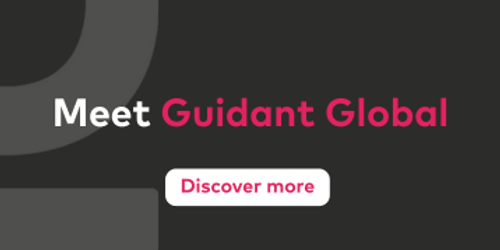
What we will cover
-
The benefits of Total Talent Management
-
Total Talent Management ensures a consistent employer brand
-
The challenges of implementing Total Total Management
-
Is Talent Management the same as HR?
-
Should we outsource talent management?
-
How has the pandemic changed talent management?
What is Total Talent Management?
Total talent management (TTM) is an emerging solution within the workforce solutions industry that integrates permanent (RPO) and contingent talent (MSP) solutions to create an all-encompassing, holistic approach to talent management.
The concept of Total Talent Management has been with us for a while now. Today, it has as many doubters as it does proponents. For some, a TTM solution will never be a realistic possibility. But it’s hard to argue with the fact that the direction of travel is clearly towards a TTM approach.
Many MSP programmes now incorporate RPO-like aspects, such as employer branding and employer value propositions (EVPs) — particularly in the UK, though this practice is also spreading across the globe. Likewise, we are seeing an increasing number of businesses choosing to expand their MSP programmes to incorporate RPO and SOW.
Though Total Talent Management in its purest form might not be with us yet, it seems we’re heading in that direction.
The benefits of Total Talent Management
- Improved ability to respond to wider business strategies
- Better workforce productivity through the effective deployment of all available skills.
- Ability to evaluate the availability of skills across the total workforce and choose or flex the optimum engagement type for the required skill.
Total Talent Management could be one solution to cure workforce management ills. Bringing permanent and non-permanent workers into one solution could facilitate greater alignment in an organisation, with one single point of contact — the workforce solution provider — managing all aspects of a business’s talent management strategy.
“The adoption of a broad range of non-traditional and agile work styles are increasingly recognized as integral to organisational success. Organisations who are able to attract, optimise and retain all employed and non-employed talent types can create a competitive advantage in their market.”
Jo Matkin, Global Workforce Solutions Research Director at Staffing Industry Analysts
In the past decade, the contingent workforce has grown across most global businesses. Today, up to 40% of a business is made up of non-permanent talent, creating a truly mixed workforce. In light of this, business leaders need to change their approach to talent — particularly if they want to successfully navigate today’s most prominent talent trends.
Total Talent Management ensures a consistent employer brand
TTM also allows a consistent employer brand for both contingent and permanent talent to emerge. Most global businesses have an employer brand, but for most, this is exclusively catered towards permanent talent. As the most gifted workers embrace greater flexibility, businesses won’t have any option but to build an employer brand for contingent workers, too.
When rolled into an MSP programme, Direct Sourcing helps to some degree. But, ideologically speaking, having a truly holistic approach to talent management — which TTM theoretically offers — could assimilate the end-to-end process.
The challenges of implementing Total Total Management
“Challenges vary depending on the ‘Total Talent Maturity’ of an organization but can include organizational siloes, limited communication between the HR and Procurement functions, lack of meaningful data and difficulties in building an effective business case. A pressing need to address skills shortages can act as the catalyst for TTM, with adoption more likely in organizations operating in industries that face these shortages such as pharmaceutical, healthcare and technology.”
Jo Matkin, Global Workforce Solutions Research Director at Staffing Industry Analysts
Total Talent Management is one of the key trends set to revolutionise the workforce solutions industry in the years to come, alongside workforce planning and employer branding. But there remains some potential challenges to implementing Total Talent Management.
As Jo Matkin points out, one of the biggest challenges is the siloed nature of HR and Procurement teams. This has long been an issue, not only in terms of making TTM a realistic undertaking but also for ensuring MSP, RPO and other outsourced solutions are a success.
But as companies come to terms with the new normal, and as HR leaders and Procurement teams are brought together through better communication, integration and technology, TTM may well be a solution that really takes off in the 2020s — particularly in sectors affected by talent shortages. Given the organisational resourcing challenges facing businesses today, that is unlikely to be a bad thing.
People also ask:
Talent Management is a specific aspect of Human Resources (HR). HR covers a wide range of functions of people management. Talent Management is just one of these functions, focusing solely on how a company engages and develops employees through the employee life cycle: acquisition, succession planning, improvement, retention and engagement.
Organisations that outsource some functions of HR can focus on their core competencies and strategic goals more effectively than those that manage everything in-house, but this will vary from business to business. It’s a good idea to talk to potential suppliers about how outsourcing talent management might work with your business and the ROI in terms of cost saving and benefits to help to decide if it’s right for you.
During the pandemic, the use of technology and mobility changed dramatically, and post-pandemic many of these approaches have remained to some extent. In many industries talent is now more widely spread geographically and therefore the reliance on technology is more profound. When looking at total talent management, these changes need to be taken into account.
Workforce insights in your inbox
Sign up for our newsletter with the latest workforce management news, insights, analysis and more.
Australia
Suite 1403, Level 14
309 Kent Street
Sydney
NSW 2000
United Kingdom
United States
27777 Franklin Road
Suite 600
Southfield
Michigan 48034



